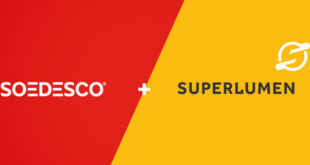There’s a good chance you haven’t heard of Soedesco.
The firm was founded in 2001 and was focusing on creating accessory and game bundles for publishers and retailers
But now it is joining the growing ranks of firms publishing indie games, competing against the likes of 505 Games and Team 17.
There’s been a big growth in the indie scene in the last couple of years and we’ve seen that the bigger publishers are only focusing on their own projects because the risk on smaller projects is too high,” executive manager Hans van Brakel says.
That creates a new problem. A lot of developers don’t know anything about the business side of things. When we started doing the publishing, we looked at the market, looked at what the opportunities were and saw that at the moment it’s important to form a partnership with a developer, to look together at what the risks are for them, and where the opportunities to get the most out of their games.
We’re offering developers what they need. We are asking them what they need to get to market. With some, we only help with a physical release; for others we do a Steam release, we do marketing and PR, we do sales, we’re doing deals with Sony, Microsoft and Nintendo. We’re capable of doing QA and localisation. We offer a range of services.”
As well as helping market and distribute other people’s titles, Soedesco is beginning to fund its own games. Recently it purchased the IP for adventure title Adam’s Venture from Vertigo Games – and is working on a new release, entitled Adam’s Venture: Origins – and it is funding [football management-cum-RPG] Soccer Legends, too.
We have a few other projects coming up, too,” van Brakel says. So we don’t just do physical distribution or digital distribution, marketing and PR – we want to have projects of our own.”
"Developers shouldn’t be using
Early Access for funding. That’s
where things go wrong."
Hans van Brakel, Soedesco
Unlike some other indie publishers, Soedesco hasn’t turned its back on the physical retail space.
Of course with physical retail you don’t have the same margins, it’s a bit more expensive because there’s a higher cost of goods,” van Brakel says.
But there are a lot of consumers that just don’t want to buy digital downloads. For them it’s interesting to buy physical games. And there are lots of parents who buy games for their children, and they don’t buy them digital download codes, they want to buy them a game in-store.
They are not going to digital markets and checking out prices and seeing what the best deal is or waiting for the Steam Summer Sale. They just want to walk into a store and grab a game. There’s this big market for physical games in general, especially for indies because they aren’t counting on that revenue. For them it’s all just a bit of extra money.”
He continues: There are a lot of reasons that people still go to physical stores. Nobody is debating whether to buy digital or physical. People who buy digital will buy digital, and those who buy physical will do that. They’re different markets.”
But as well as physical retail, Soedesco is dabbling with Steam Early Access, and it recently launched Wild Season (above) onto the scheme. Early Access has had its challenges, with players frustrated by the lack of pace on finishing games, such as DayZ. But it has its benefits, insists van Brakel.
Developers shouldn’t use Early Access for funding – that’s where things go wrong,” he says. Developers can learn a lot from Early Access. For example, in the first week of Wild Season, there were a lot of problems and bugs with the game, which they hadn’t checked at all. They learnt so much from doing Early Access that we are certain that in the end they will deliver a better product.
So if it’s for the learning experience, then it’s very good.”

 MCV/DEVELOP News, events, research and jobs from the games industry
MCV/DEVELOP News, events, research and jobs from the games industry



